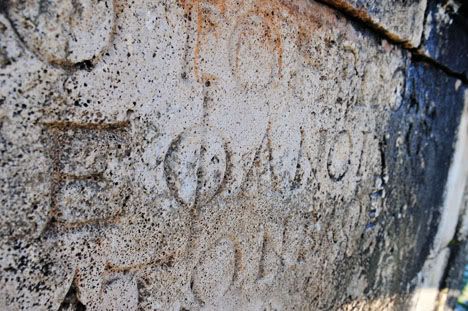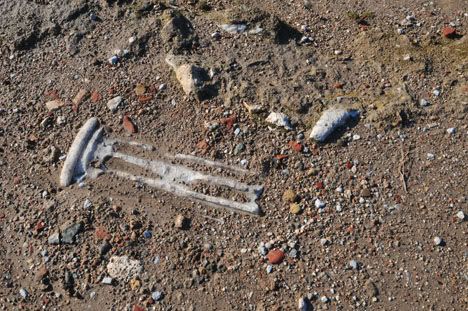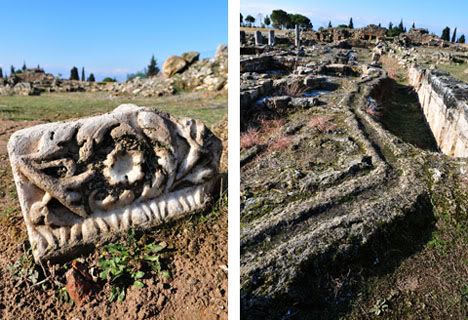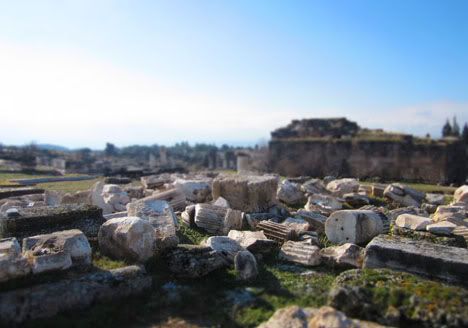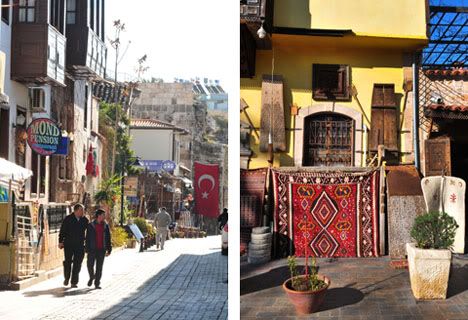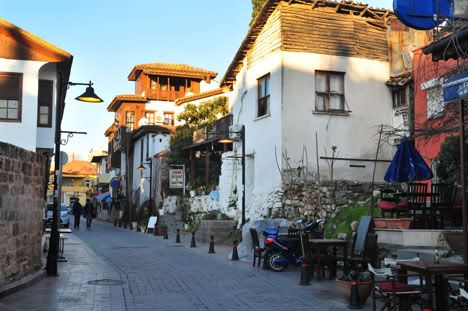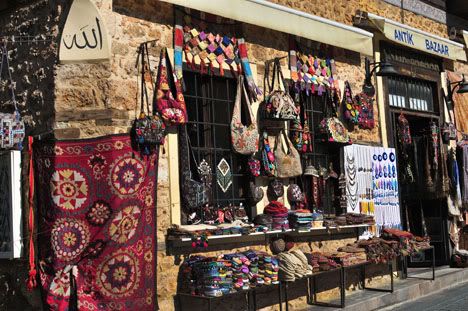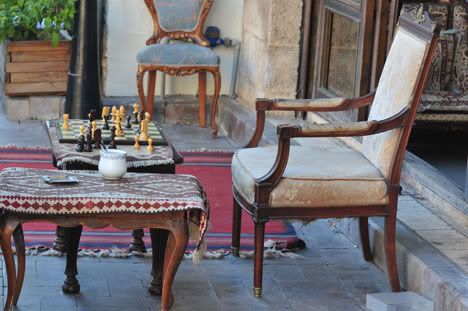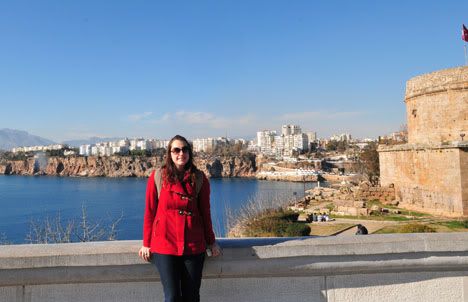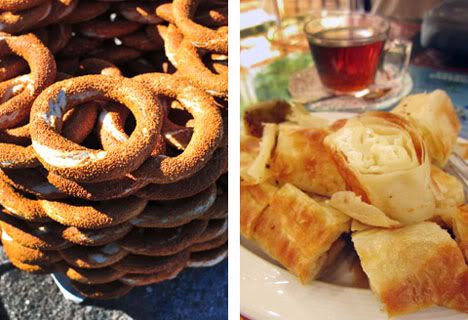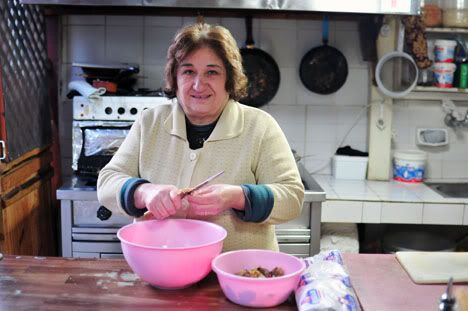To check out the first part of my voyage to Turkey in Antalya, click here.
From my base in Antayla, I headed out for a quick weekend trip to the area of Pamukkale in the central Western part of the country. Pamukkale is famous as a World Heritage Site destination (and I've yet to be disappointed with those) for its vast hillside covered in white, cooled calcium carbonate travertines and deposits as a result of the hot springs waters that flow down it. I visited a similar calcium travertine site a few years ago in Mexico (Hireve el Agua); the deposits at Pamukkale are more snow-like in their nature, and cover quite a bit more territory (in fact, pamukkale means "Cotton Castle" in Turkish):


The morning after I arrived in town, I headed out to scale the hillside at the butt-crack of dawn when I knew I would have the whole place to myself. Of course, as it was super cold and the middle of January, I didn't have a whole lot to worry about on the competing-tourist front.



These benches are where you have to take your shoes and socks off to walk through the flowing spring water and over the hardened travertines without damaging them. As it was incredibly cold, I took comfort in the fact that, since these waters were thermal, they would be nice and warm to walk through...

...except that they were ice cold! The spring source is at the top of the hill. By the time the running waters reach this point at the bottom, they are just your average winter mountain waters! While it was great watching the sun come up, once your feet start to burn from the cold water and air, it's a bit distracting for photo-making:

A few years ago, people were able to swim freely in the travertine pools, quickly causing them to discolor and become damaged. Fortunately, UNESCO stepped in with protective and restorative measures, and the pools are mostly back to their original conditions, luckily for us. They're beautiful:
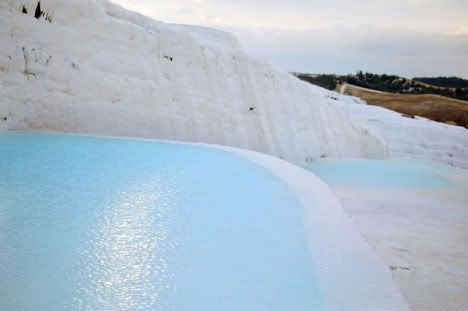






The original infinity pool:



Once at the top of the climb, the waters become hotter for thawing out your feet (although, take it from me, they won't quite feel right for the rest of the day!).
(You know, traveling alone, it's really hard to get pictures of yourself (for posterity's sake, of course). Thankfully, a trio of Japanese or a 20+ group of Chinese is never too far away to help):

The top of the climb also means you encounter the ruins of the ancient Roman spa city of Hieropolis, which are also protected under UNESCO's loving rules eye.
Hieropolis was built in the 2nd century AD to capitalize on the healing properties of the many thermal hot springs in the area. It's golden age (or "hey day" for us Midwestern folk) was between the years 129 and 215 AD, when thousands of visitors came for natural cures, and the population grew to about 100,000. Unfortunately, 7th through 12th century raids, invasions, and especially earthquakes contributed to this once magnificent city falling into ruins:
The ancient theater is one of the best preserved in Turkey:

The Antique Pool, which was the source of the main hot springs and the center of Hieropolis's health center, stays a constant 36-57ºC and contains such properties as bicarbonate, sulfate, calcium, and iron (good for all kinds of ailments). The ionic pedestals that once lined the pool collapsed during a 7th century earthquake, but today you can still swim/bathe in it among the ruins (and, luckily for me, this day the pool was swimsuit-clad tourist free!):
There's nothing, nothing, nothing like a little homemade, hot pita bread with a good meal before hitting the road back to Antalya:
The four-hour drive back was so breathtaking. The mountains in this area got dumped on with fluffy snow since I came the first time, and ridges among ridges were covered in blankets of green pine trees saturated with white. Our dirty bus windows and my cursed aisle-seat placement prevented me from getting any photos until we were out of the mountains in the flatlands of our rest stop.
30+ years of snowy winters, and I'll never cease to be amazed by the beauty of it the night after a heavy fall. Also, thank you Mother Nature for shredding my stereotypes about what kind of weather I should expect in a country like Turkey at all times.
Arriving back in Antalya, I checked into the ocean-less cruise ship for a few days of our fantabulous conference, but the Turkey adventures did not stop there, folks! Stay tuned for a few days of Istanbul squeezed in before my chilly return back to Ukraine...



